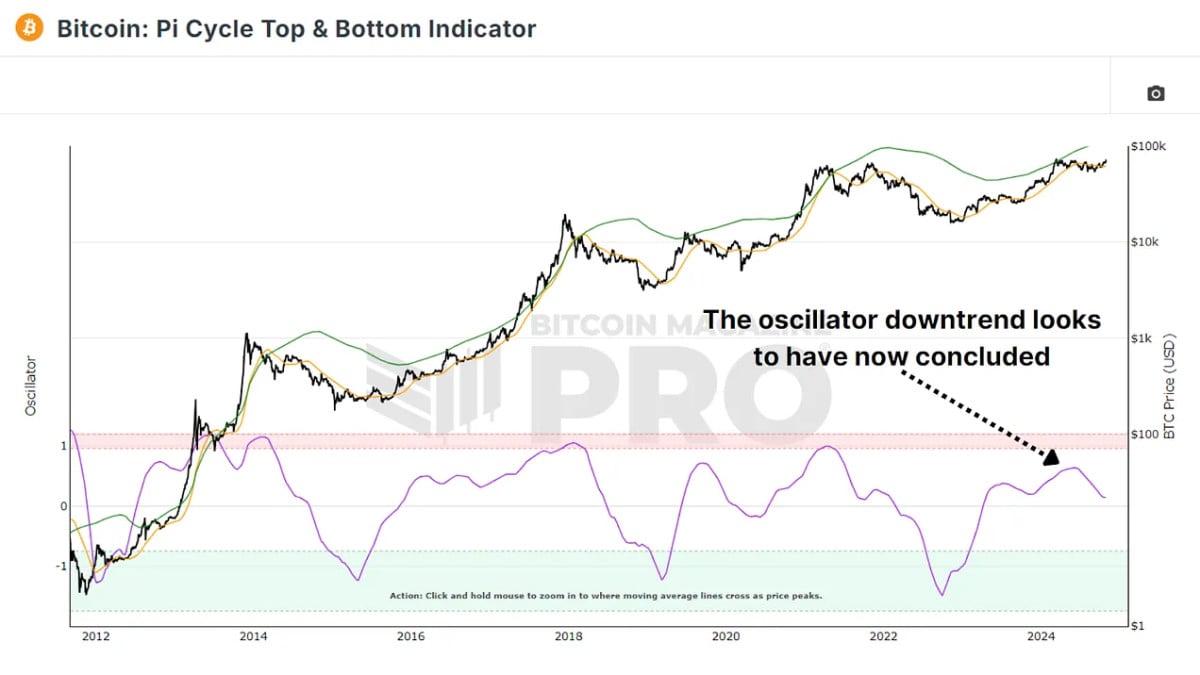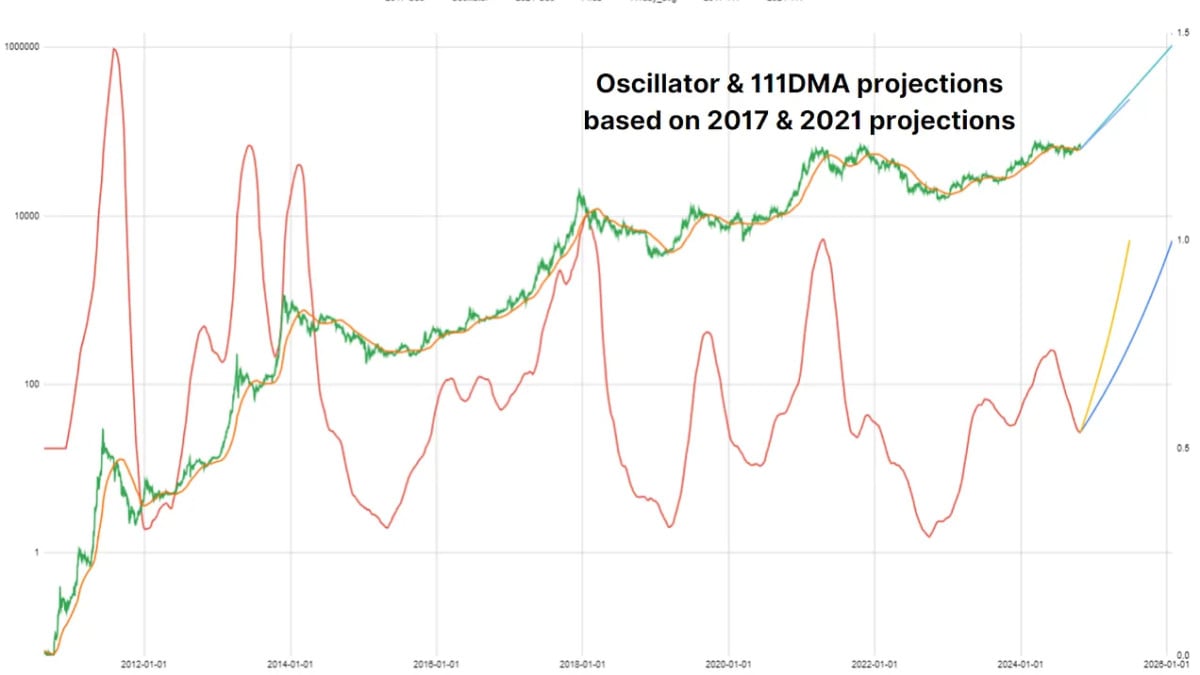With years of historical data, we can look at the patterns of past bull cycles to become increasingly able to make predictions about our current cycle. In this analysis, we delve into when bitcoin's next peak may occur and at what price level.
The Pi cycle
The Pi Cycle Top Indicator is one of our most popular tools for analyzing bitcoin cycles. This indicator monitors the 111-day and 350-day moving averages (multiplied by 2), and when these two lines intersect, it has historically been a reliable sign of bitcoin reaching a cycle peak, usually in just a few days. After several months of these two levels separating due to sideways price action, we have just started to see the 111-day trend back up to begin closing the gap.
We can measure the difference between the two averages to better define bitcoin's position within the bull and bear cycles with the Pi Cycle Upper and Lower Indicator. This bullish oscillator trend again hints that bitcoin's next bull run may be just around the corner, with parallels to previous cycles seen in 2016 and 2020.

Previous bitcoin Cycles
Historically, bitcoin bull cycles feature similar phases: an initial rapid growth, a cooling period, a second peak, and finally a significant pullback followed by a new rise.
2016 Cycle: This cycle saw a first peak, a dip, a second peak, and then a full-blown bull market. It is very similar to the trend we are currently seeing. bitcoin price reached new highs after these two pullbacks.
2020-2021 Cycle: The pattern was slightly less pronounced, but a similar trajectory was observed. bitcoin price peaked twice, once during the initial surge and again at the peak of the bull run when btc was hitting an all-time high.
Using the bitcoin Magazine Pro API, we can simulate different growth scenarios based on past cycles. Since the upper and lower oscillator of the Pi cycle recently rose, we can overlay the rate of change in the oscillator from previous cycles to see the potential path of this cycle.

If the 2021 cycle repeats, the 111-day and 350-day moving averages may intersect around June 29, 2025, indicating a possible bitcoin peak. If the 2017 cycle is mirrored, the moving averages may not cross until January 28, 2026, suggesting a later peak.
Price projections
Using these dates, we can also try to estimate potential price levels. Historically, the price of bitcoin significantly exceeded the moving averages at its peak. During the 2017 bull run, the price of bitcoin was three times the value of these moving averages at the peak. However, as the market matures, we have seen diminishing returns each cycle, meaning that the price of bitcoin might not rise as dramatically compared to its moving averages as it has historically.

If bitcoin follows a similar pattern to the 2021 cycle, with an increase of around 40% above its moving averages, this would place bitcoin's peak at approximately $339,000. Assuming diminishing returns, bitcoin price could rise only about 20% above moving averages. In this case, the maximum price would be closer to $200,000 in mid-2025.
Similarly, if the extended 2017 cycle repeats with diminishing returns, bitcoin could peak at $466,000 in early 2026, while a more moderate rise could result in a price peak of around $388,000. Although bitcoin is unlikely to reach $1 million this cycle, these more moderate projections could still represent substantial gains.
Conclusion
While these projections use well-established data, they are not guarantees. Each cycle has its unique dynamics influenced by economic conditions, investor sentiment and regulatory changes. Diminishing returns and even potentially longer cycles are likely, reflecting the maturation of the bitcoin market.
As bitcoin's bull cycle continues to unfold, these predictive tools could provide increasingly accurate information, especially as data evolves. However, an analysis like this provides potential results to help you manage risks and prepare for each result.
For a more in-depth look at this topic, watch a recent YouTube video here: Mathematically Predict bitcoin's Next All-Time High






